If coeffiecient of friction between the block of mass 2kg and table is 0.4 then out acceleration of the system and tension in the string. (g=10m/s2)
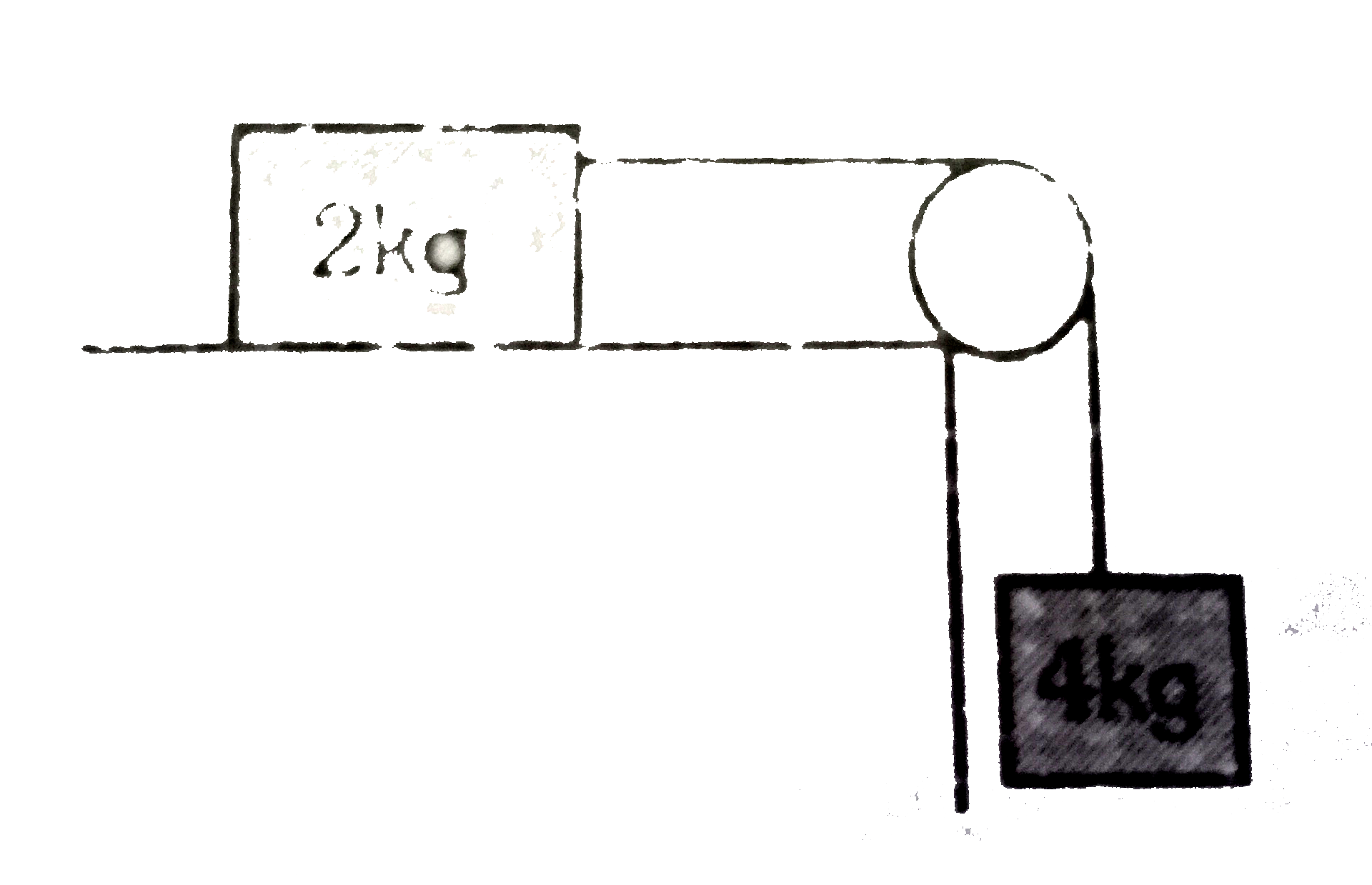 Solution in Gujrati
Solution in Gujrati
Acceleration of the system a=4g−0.4(2g)6=5.33m/s3
For the block of mass 4kg 4g−T=4(5.33)⇒T=18.68N
Topper's Solved these Questions
- NEWTONS LAWS OF MOTIONBOOK - ALLEN CHAPTER - NEWTONS LAWS OF MOTIONEXERCISE - EXERCISE-I
52 Videos
- NEWTONS LAWS OF MOTIONBOOK - ALLEN CHAPTER - NEWTONS LAWS OF MOTIONEXERCISE - EXERCISE-II
112 Videos
- NEWTONS LAWS OF MOTIONBOOK - ALLEN CHAPTER - NEWTONS LAWS OF MOTIONEXERCISE - EXERCISE-III
28 Videos
- NEWTON'S LAWS OF MOTION & FRICTIONBOOK - ALLEN CHAPTER - NEWTON'S LAWS OF MOTION & FRICTIONEXERCISE - EXERCISE (JA)
4 Videos
- RACEBOOK - ALLEN CHAPTER - RACEEXERCISE - Basic Maths (Wave Motion & Dopplers Effect) (Stationary waves & doppler effect, beats)
25 Videos
Similar Questions
USS 150) Two masses of 5 kg and 10 kg are connected to a pulley as shown. What will be the acceleration of the system (g= acceleration due to gravity)
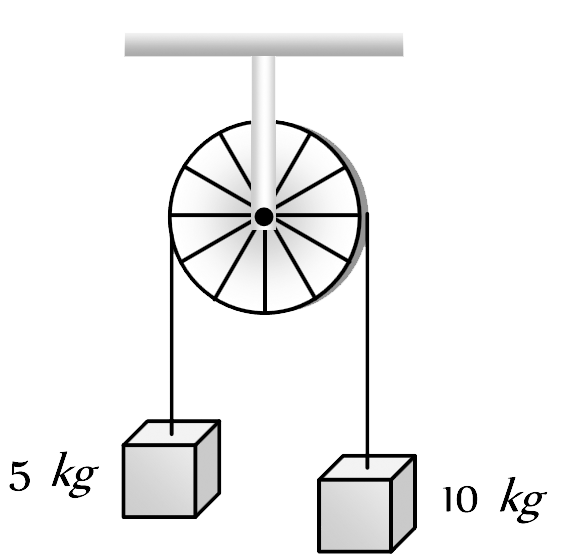
View SolutionA particle is in straight line motion with uniform velocity A force is not required
View SolutionAssertion: The driver in a vechicle moving with a constant speed on a straight road is in a non-inertial frame of referance.
Reason: A reference frame in which Newton's laws of motion are applicable is non-inertial.
View SolutionA piece of wire is bent in the shape of a parabola y=kx2 (y-axis vertical) with a bead of mass m on it. The bead can slide on the wire without friction. It stays at the lowest point of the parabola when the wire is at rest. The wire is now accelerated parallel to the x-axis with a constant acceleration a. The distance of the new equilibrium position of the bead, where the bead can stay at rest with respect to the wire, from the y-axis is:
View SolutionThe frequency of a radar is 780 MHz. After getting reflected from an approaching aeroplane, the apparent frequency is more than the actual frequency by 2.6 kHz. The aeroplane has a speed of
View SolutionIn the adjacent figure, masses of A,B and C are 1kg,3kg and 2kg respectively. Find
(a) the acceleration of the system and
(b) tension in the strings.
Neglect friction.(g=10m/s2)
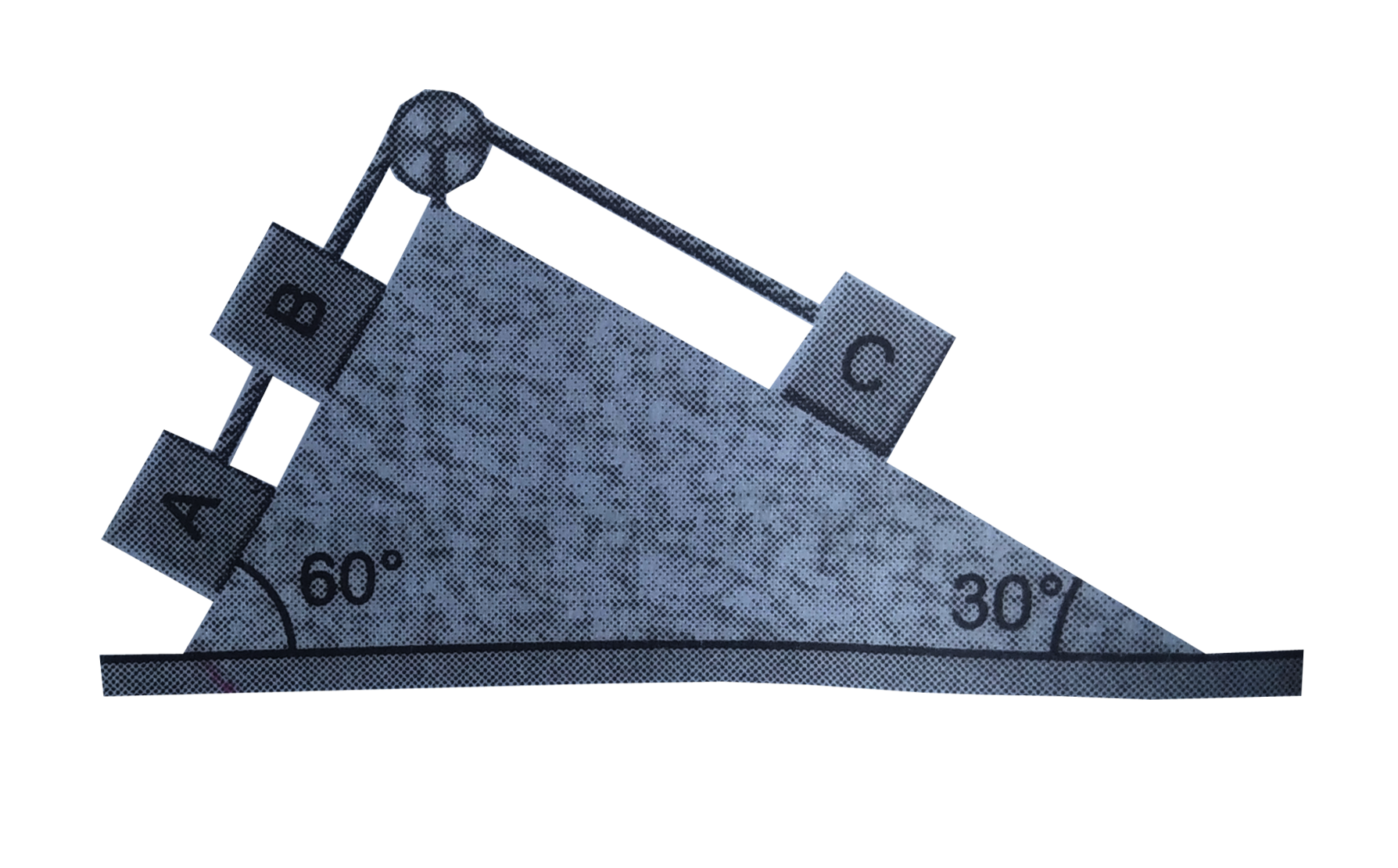
View SolutionIn figure calculate the linear acceleration of the blocks. Mass of block B= 8kg mass of disc shaped pulley =2kg (take g=10m//s^(2) )
View SolutionThe coefficient of static friction, μs between block A mass 2kg and the table as shown in the figure, is 0.2. What would be the maximum mass value of block B, so that the two blocks do not move ? The string and the pulley are asseumed to be smooth and massless (g=10m/s2)
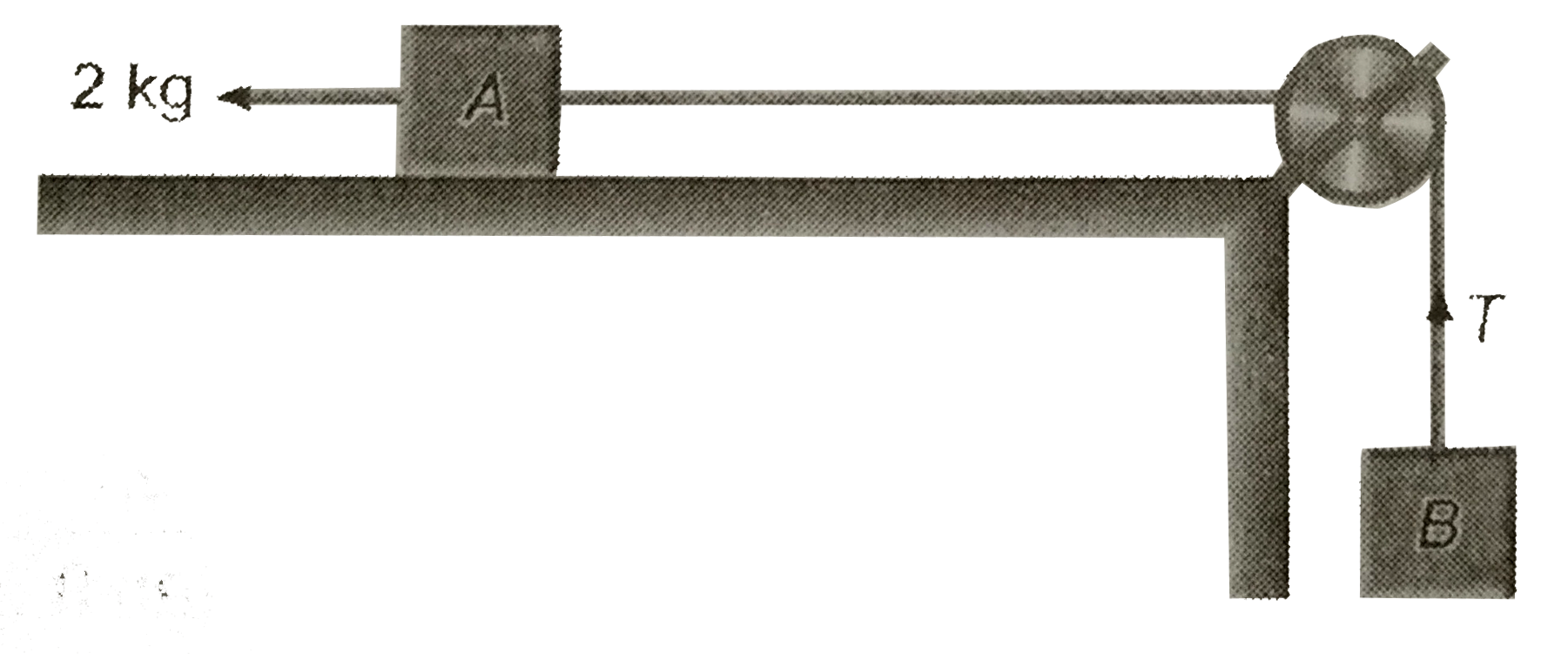
View SolutionTwo blocks of mass 4kg and 2kg are connected by a heavy string and placed on rough horizontal plane. The 2 kg block is pulled with a constant force F. the coefficent of friction between the blocks and the ground is 0.5. what is the value of F so that tension in the string is constant throughout the length? (g=10m/s2)

View SolutionIn the arrangement shown, the 2 kg block is held to keep the system at rest. The string and pulley are ideal. When the 2kg block is set free, by what amount the tension in the string changes? [g=10m/s2]
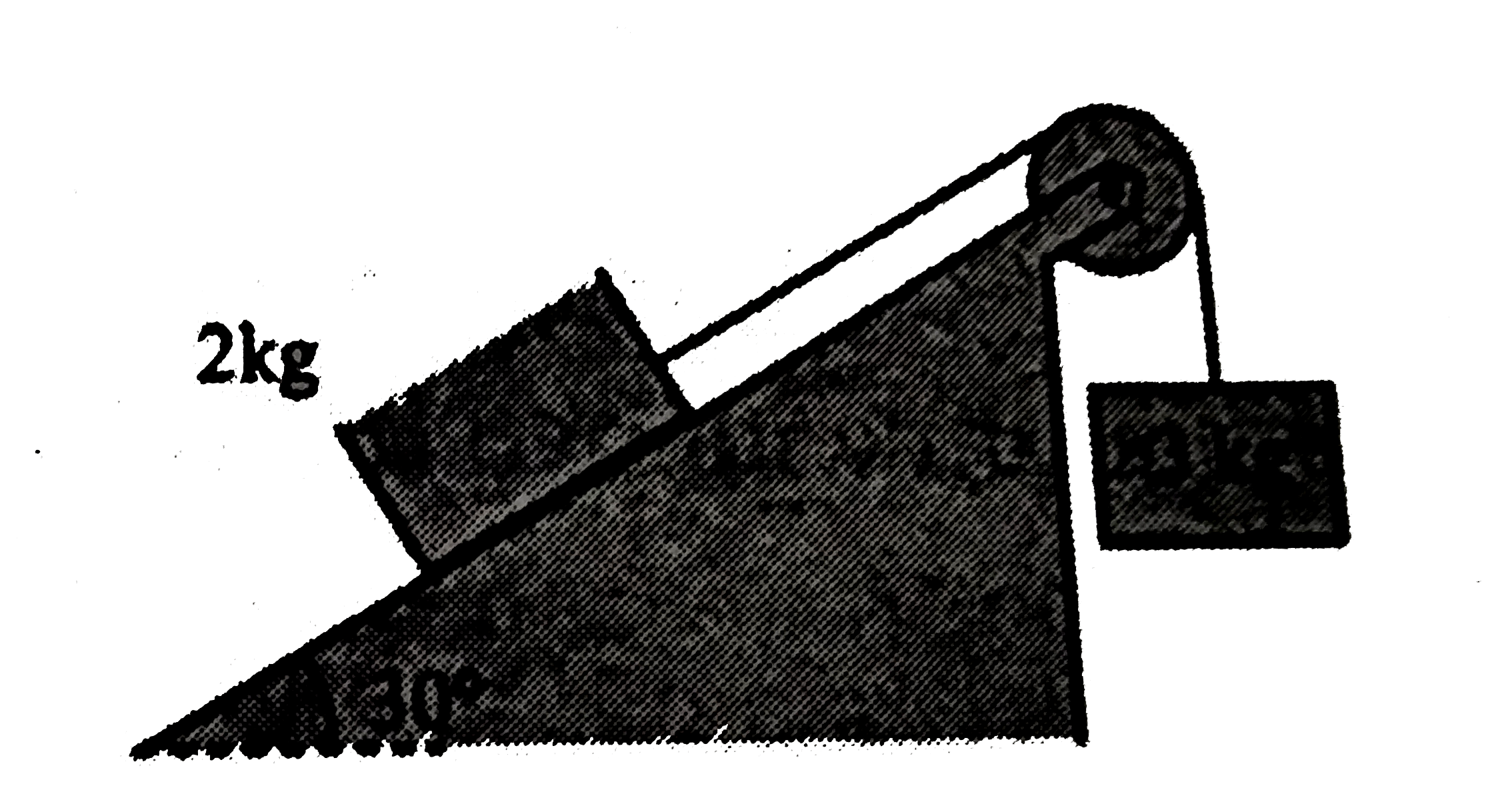
View Solutionद्रव्यमान 10 किग्रा का एक ब्लॉक एक क्षैतिज मेज पर रखा है जिससे एक डोरी बँधी है | डोरी का दूसरा सिरा मेज के सिरे पर लगी घर्षण रहित घिरनी के ऊपर से गुजरता है तथा इस सिरे पर द्रव्यमान 20 किग्रा का बाँट बँधा है | यदि मेज व ब्लॉक के बीच घर्षण गुणांक 0.5 है, तो ज्ञात कीजिए : (a) डोरी में तनाव, तथा (b) निकाय का त्वरण | (g=9.8 मी/से2)
View SolutionA 'block' of mass 10 kg is suspended with string as shown in figure. Find tension in the string. (g=10m//s^(2))
View SolutionA bock of mass M is on a horizontal table and is connected to an inextensible string. The string passes over a frictionless pulley fitted at one edge of the table. At the other end, another block of mass m hangs vertically. Coefficient fo friction between the table and the block of mass is mu . Find the acceleration of the system. Also find the tension in the string.
View SolutionIn the adjacent fig, masses of A, B and C are 1 kg, 3kg and 2kg respectively. Find a) the acceleration of the system b) tension in the string (g=10m//s^(2))
View SolutionWhat is the acceleration of the block and trolley system shown in a Fig.(a), if the coefficient of kinetic friction between the trolley and the surface is 0.04? What is the tension in the string? (Take g =10ms−2 ). Neglect the mass of the string.
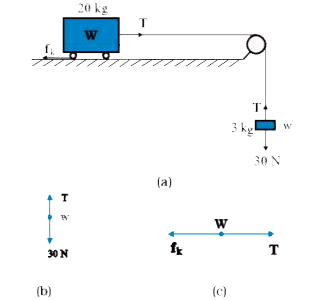
View SolutionWhat is the acceleration of the block and trolley system shown in a Fig.(a), if the coefficient of kinetic friction between the trolley and the surface is 0.04? What is the tension in the string? (Take g =10ms−2 ). Neglect the mass of the string.
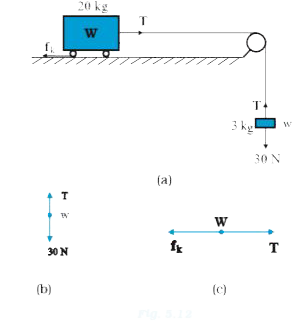
View Solution
